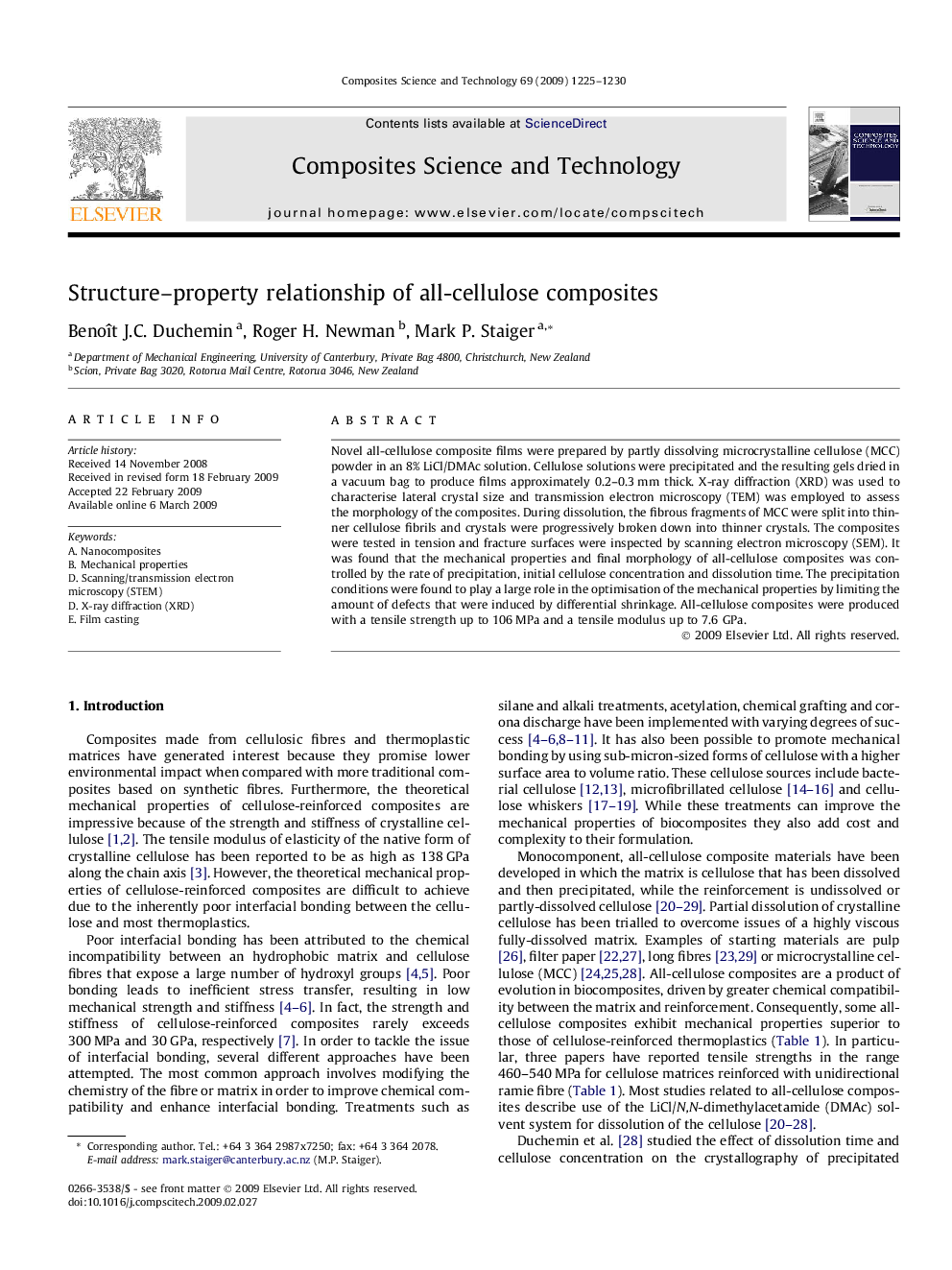| کد مقاله | کد نشریه | سال انتشار | مقاله انگلیسی | نسخه تمام متن |
|---|---|---|---|---|
| 821874 | 1469556 | 2009 | 6 صفحه PDF | دانلود رایگان |

Novel all-cellulose composite films were prepared by partly dissolving microcrystalline cellulose (MCC) powder in an 8% LiCl/DMAc solution. Cellulose solutions were precipitated and the resulting gels dried in a vacuum bag to produce films approximately 0.2–0.3 mm thick. X-ray diffraction (XRD) was used to characterise lateral crystal size and transmission electron microscopy (TEM) was employed to assess the morphology of the composites. During dissolution, the fibrous fragments of MCC were split into thinner cellulose fibrils and crystals were progressively broken down into thinner crystals. The composites were tested in tension and fracture surfaces were inspected by scanning electron microscopy (SEM). It was found that the mechanical properties and final morphology of all-cellulose composites was controlled by the rate of precipitation, initial cellulose concentration and dissolution time. The precipitation conditions were found to play a large role in the optimisation of the mechanical properties by limiting the amount of defects that were induced by differential shrinkage. All-cellulose composites were produced with a tensile strength up to 106 MPa and a tensile modulus up to 7.6 GPa.
Journal: Composites Science and Technology - Volume 69, Issues 7–8, June 2009, Pages 1225–1230